The Shared Matches tools at AncestryDNA, Family Tree DNA (FTDNA), MyHeritage and Living DNA can help you figure out how you’re related to your DNA matches. Here’s how to find the Shared Matches tools at your favorite DNA testing company websites.
I have heard so many of you tell me you are overwhelmed by your long list of DNA cousins! You don’t know how to go about turning that list of matches into actual genealogical discoveries. You need to be using the shared matches tool.
This article explains briefly what the shares matches tool is and how to find it at 23andMe, AncestryDNA, Family Tree DNA, Living DNA or MyHeritage. The next article explains how to use the shared matches tool to help identify your DNA matches.
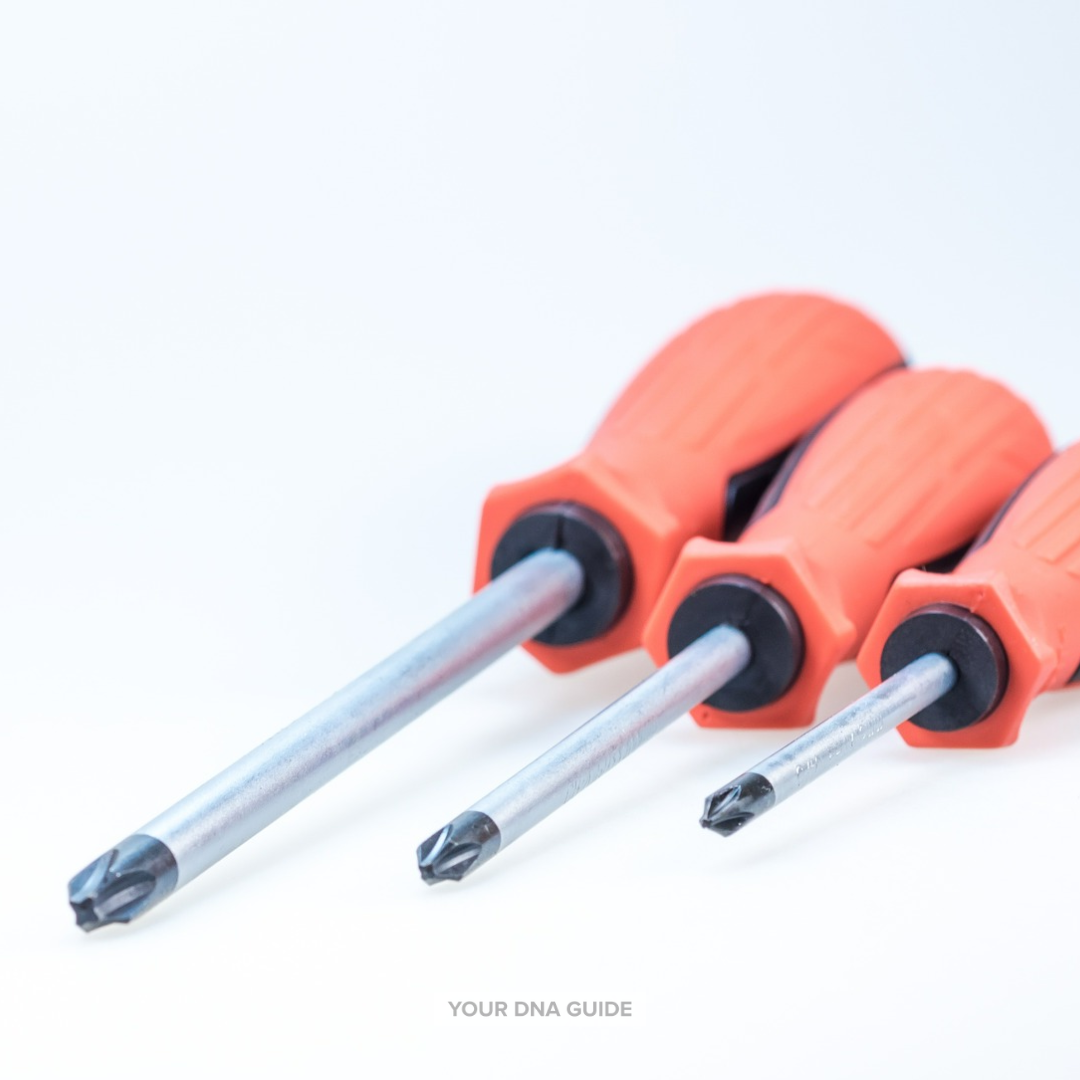
The Shared Matches Tool
My very favorite tool to help you immediately take control of your DNA match list is the shared matches tool. Every company has one, and it works like a filter on your match list. It shows you a list of people who share DNA with you and one other person.
Here’s how to find this tool at each of the testing companies, and what it is called.
AncestryDNA: Shared Matches
To access more than three shared matches, you’ll need an AncestryDNA Plus or regular Ancestry subscription. Once you’ve selected a specific match at Ancestry, look for the tabs shown below and click “Shared Matches.” (Got it. Let’s go to the next article on using this tool.)
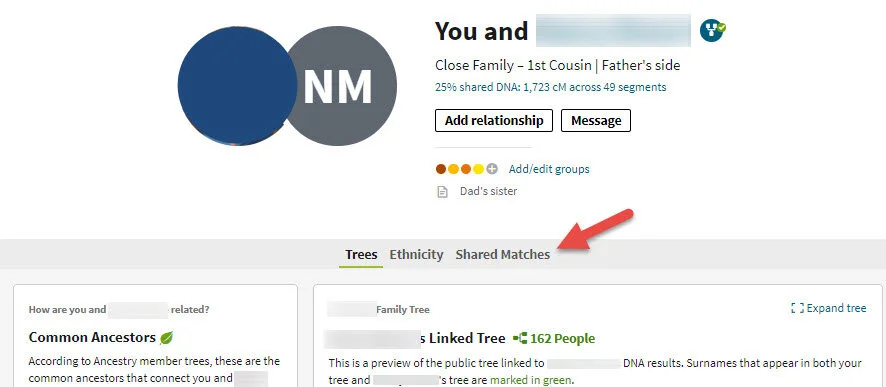
Family Tree DNA: In Common With
At FTDNA, the tool for finding shared matches is called In Common With (ICW). You’ll activate it by selecting one match from your match list, then clicking the In Common With Button, shown below. (Thanks. Now show me how to use it.)
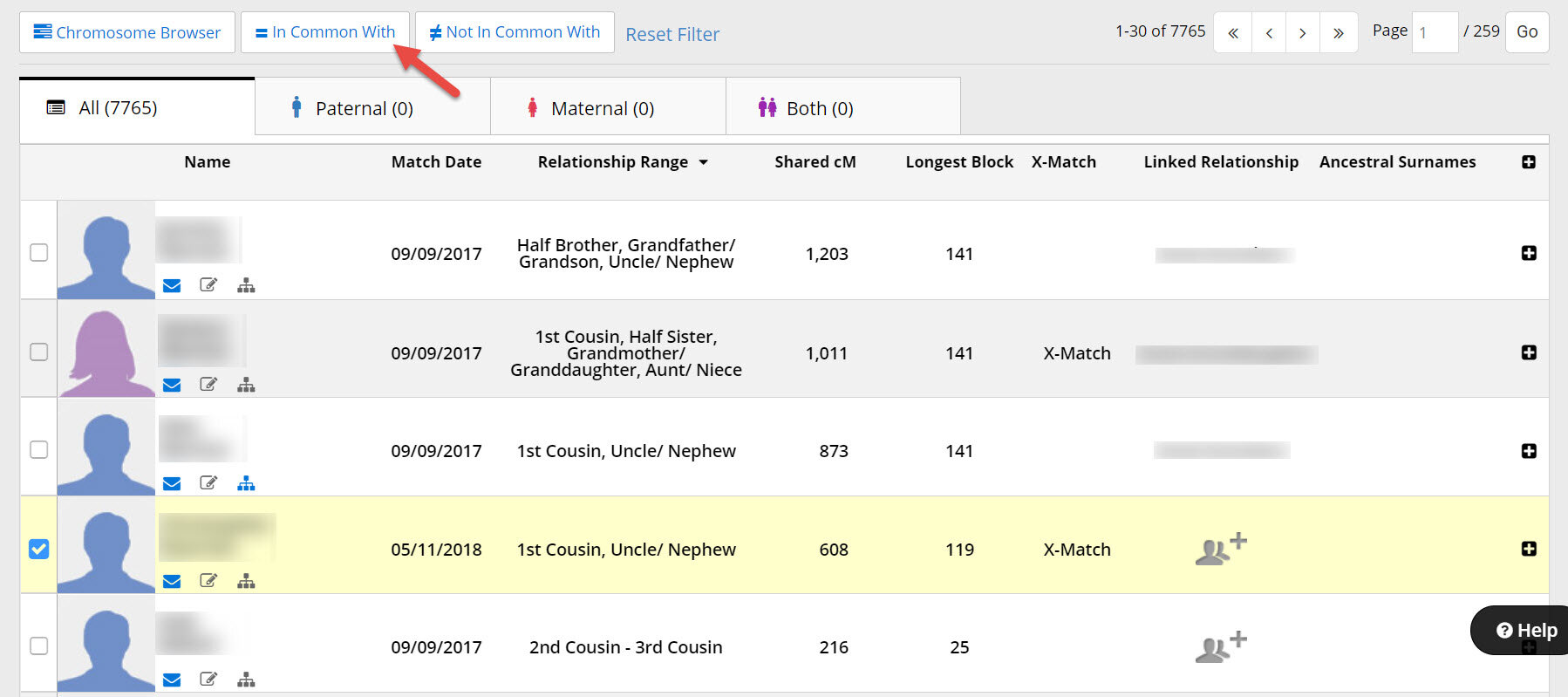
Living DNA: Shared Matches
On your Living DNA list of relatives (matches), it shows you how many shared matches you have with each one. Click on a match’s name to the list of relatives you have in common. (Ok. Now take me to the article about using the shared matches tool effectively.)
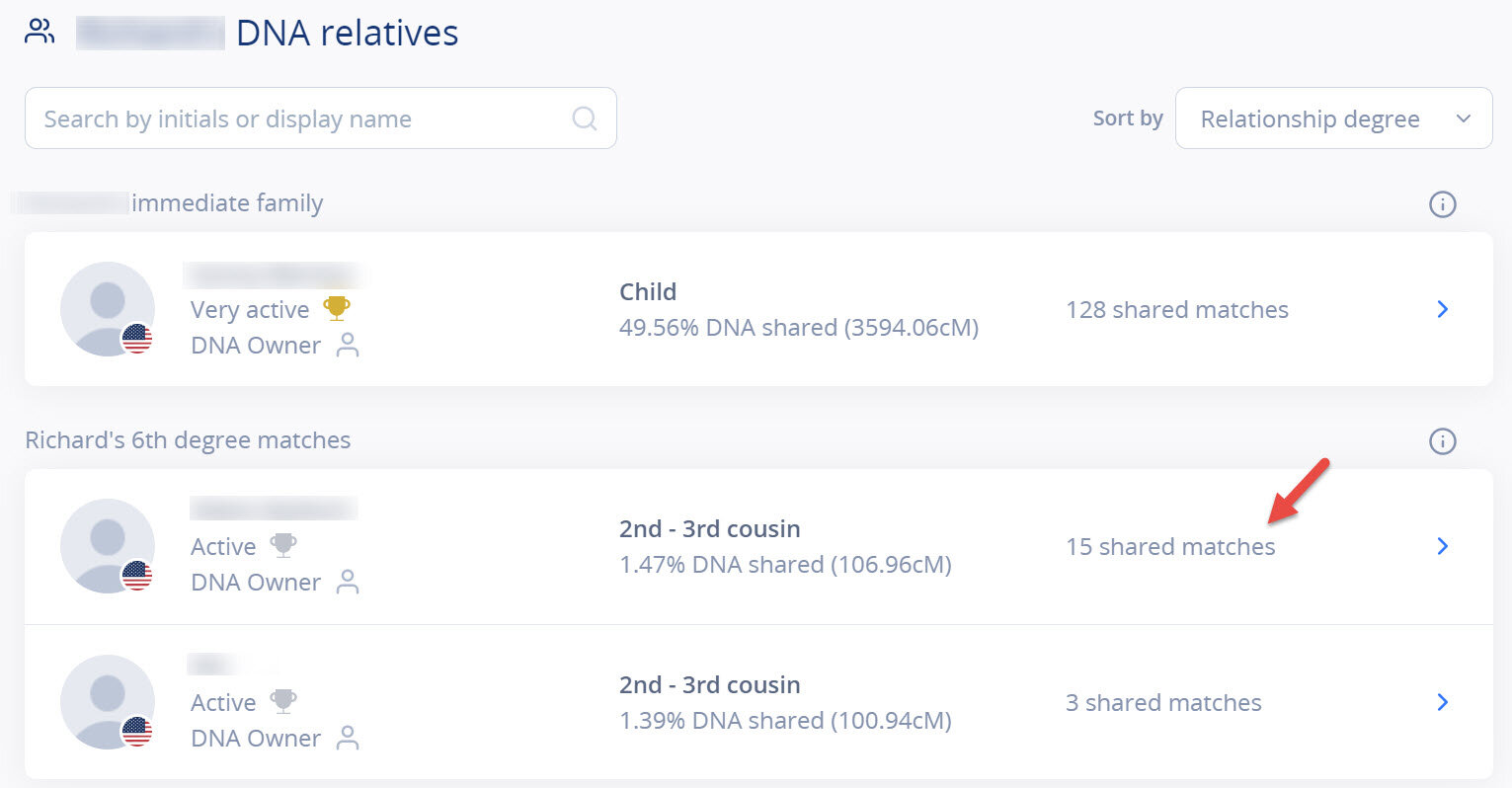
MyHeritage DNA: Shared DNA Matches
To access your Shared Matches at MyHeritage, you’ll need to have a MyHeritage subscription or have uploaded a DNA test and paid the unlock fee to access advanced DNA tools. Click on your DNA match of interest. Then scroll down quite a ways on your match summary page until you see the Shared DNA Matches list, as shown below. The list of your shared matches appears in the center column, with their estimated relationships to YOU on the left and to your DNA match of interest on the RIGHT. (Right. Let’s move on to the next article about how to understand this.)

23andMe: Relatives in Common
23andMe testers will select a DNA match, scroll down on the match page (as shown below) and click “Find Relatives in Common.” (Great. Take me to the next article on using this tool.)
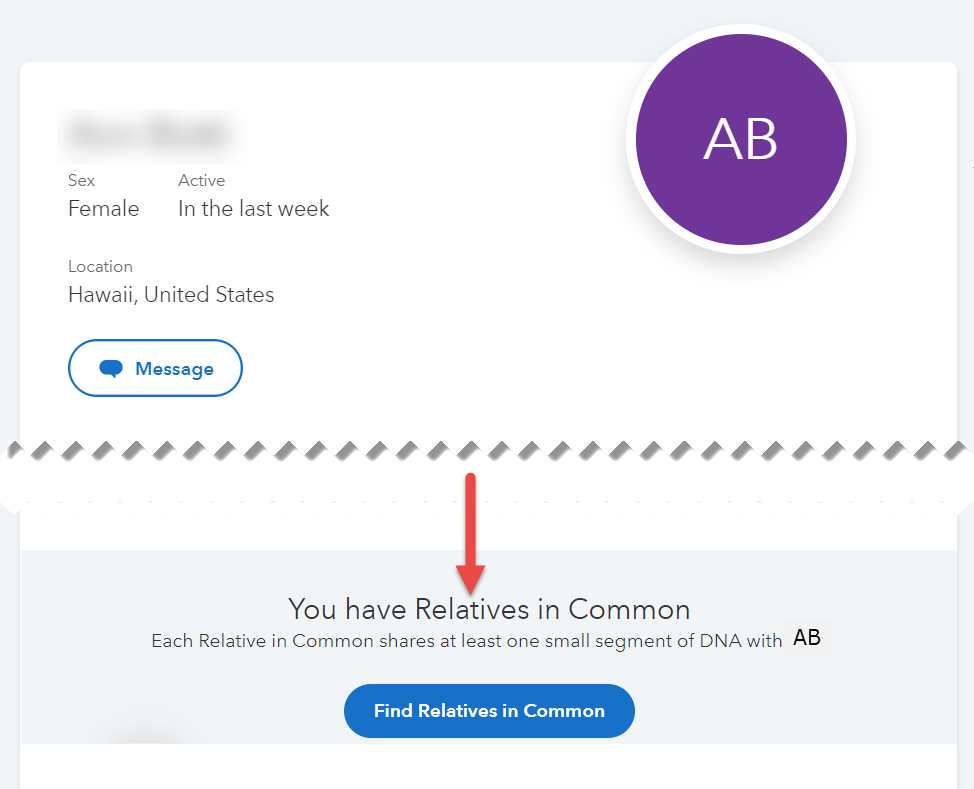
How to Use the Shared Matches Tool
Now that you’ve figured out how to access the Shared Matches tool at your favorite DNA testing company website, keep reading to learn how to use it effectively.
Tips for Every DNA Testing Company
Finding shared matches is just one of many tools offered at each testing company. You’ll find that depending on which company you tested at, you’ll have a different assortment of tools. That’s why we’ve put together our Quick Reference Guides. These inexpensive guides outline the features and procedures specific to each company so you can keep the information straight as you’re delving into your DNA results.

